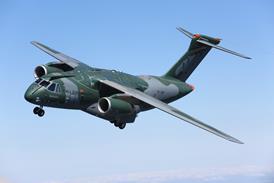STEWART PENNEY / PALMACHIM AIR BASE
The Iraq war proved that Israel's Arrow anti-tactical ballistic missile system could be integrated into a multi-tiered air defence system, says Lt Col Shahar Shochat, commanding officer of the Israeli air force's first Arrow missile unit.
Shochat says that during the recent conflict, the Israel Aircraft Industries system, comprising the Arrow interceptors, Elta Green Pine L-band active array long-range radar and Tadiran Citron Tree fire control centre, was successfully integrated as the upper tier of a combined air defence network. The lower element comprised US and Israeli Patriot PAC-2/3 and US Navy Aegis shipborne systems.
"We proved we can operate with PAC-2, PAC-3 and Aegis," says Shochat. "It's the first time we've had a two-tier air defence system operational." He says there had been concern that communications between the systems would be an issue, "but we made it work, and didn't have to make changes".
During the conflict, the missile unit at Palmachim on the Israeli coast was able to see Iraqi missile launches against Kuwait, says Shochat.
Although the Green Pine can see into Iraq and Syria, the Iraqi missiles were short-range, suggesting they were either detected by USA egis-equipped warships in the Gulf or the USA's Defense Space Programme early-warning satellites, with the Israeli air force receiving networked data.
The Palmachim battery is one of two operational Arrow units, with a third planned. Israeli Patriot batteries are routinely integrated with the Citron Tree, with the battle commander deciding which missile system will engage the incoming target, says Shochat.
As Arrow is designed specifically for Israeli needs it is not a fully mobile system, although it is relocatable. Each of the missiles weighs 3,500kg (7,700lb), and six are contained in a single launcher. A battery has eight launchers.
Source: Flight International























